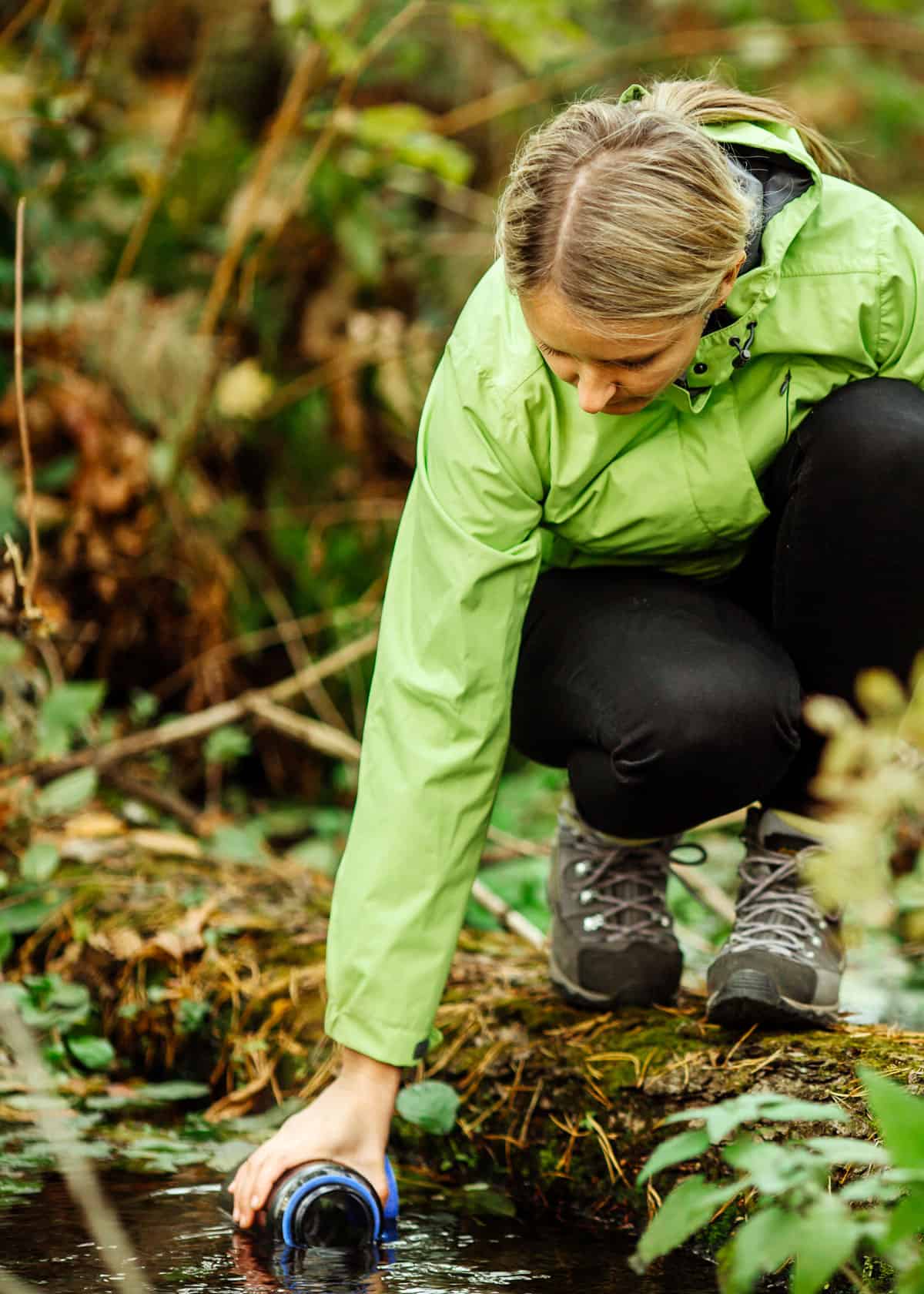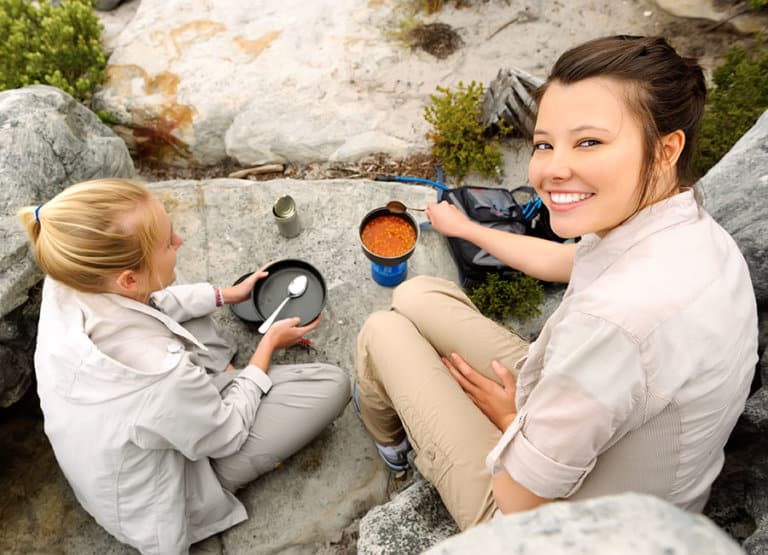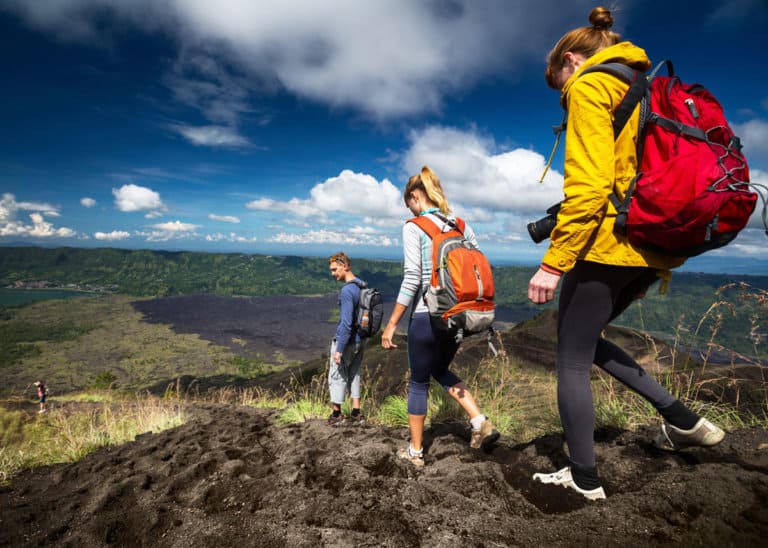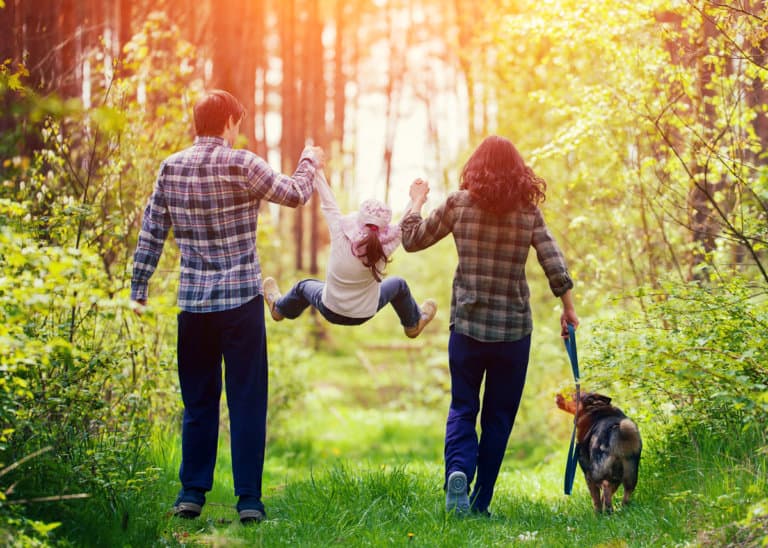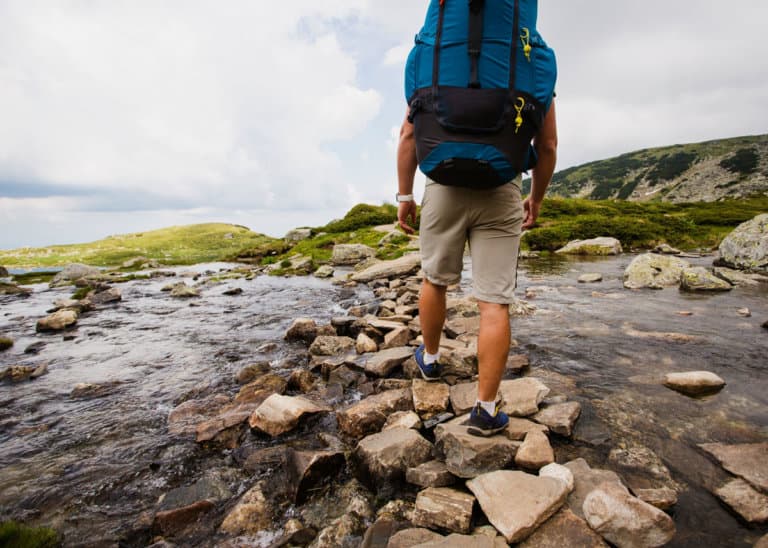How Much Water to Take Backpacking? Hikers Hydration Guide
How much water is needed when hiking? You’ll want to start hydrated, use 500 ml (17 ounces) of water as a starting point. Then you’ll want to drink water 250 ml (8 ounces) every 30-60 minutes – or when you feel thirsty.
For a 4-hour hike, you’ll likely drink between 1 and 2 liters.
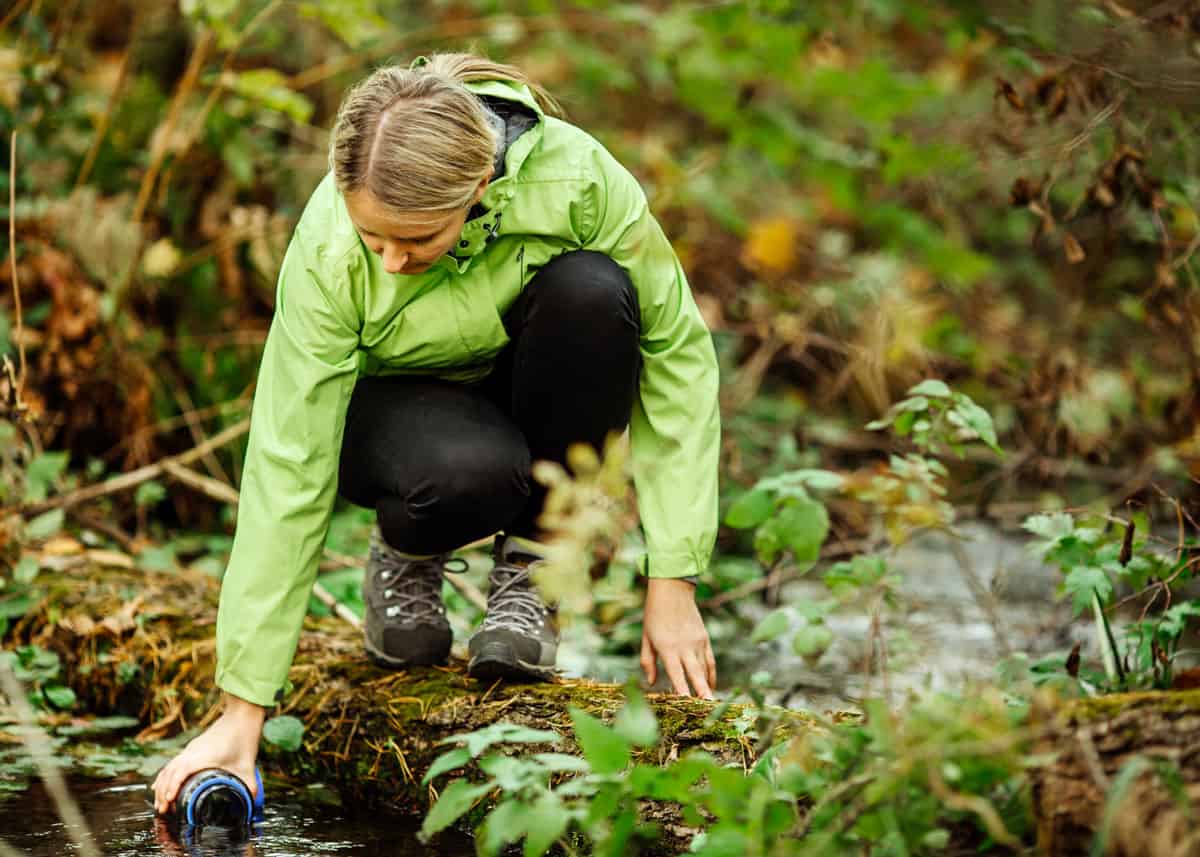
Exploration, fresh air, and amazing scenery are just some of the reasons why so many people head to local hiking trails to spend a few hours or a few days soaking up the majesty of nature.
As you head out, you have two options: bring water with you or purify it on the trail. In this guide, you’ll learn how to effectively do both.
How Much Water to Take Backpacking?
This isn’t a simple question.
Everyone consumes water at a different rate. I’m sure you have a friend who seems to sweat more than you do. The amount of water you need should be based solely on your needs and yours alone.
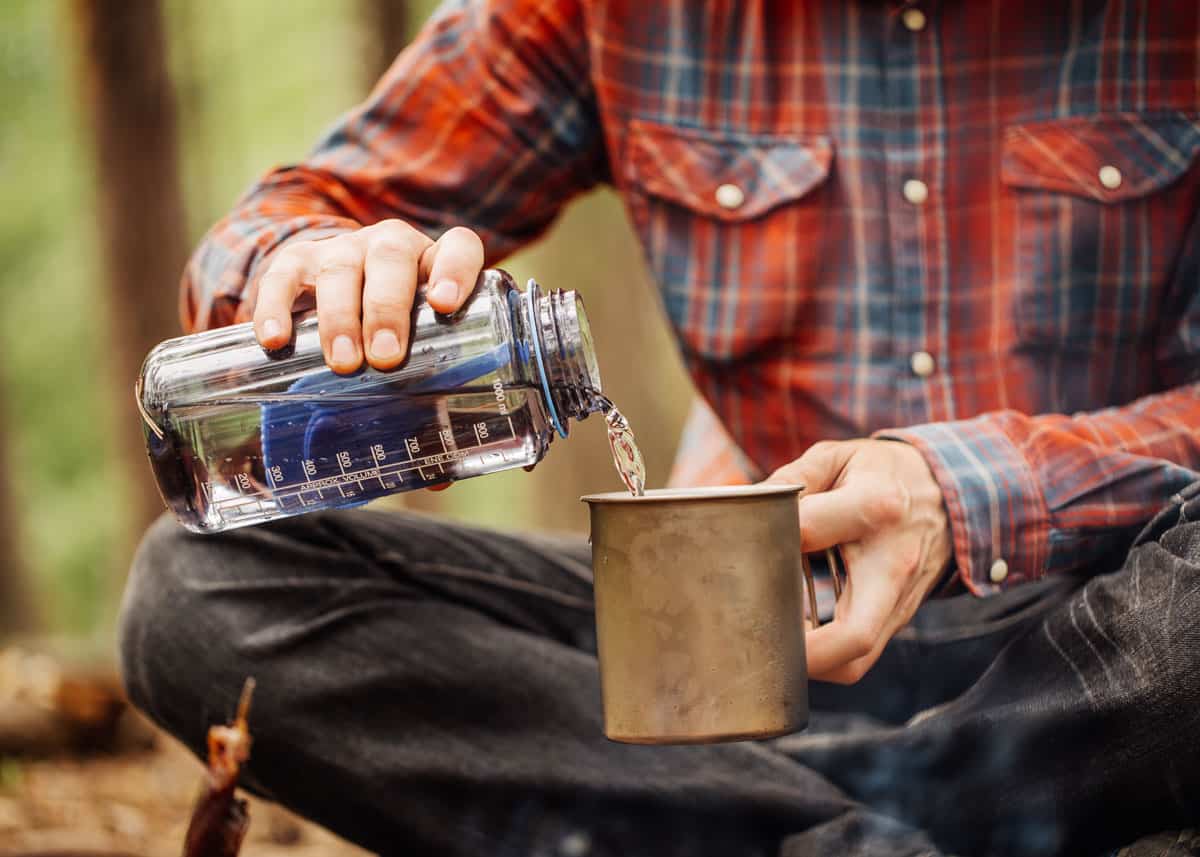
Multiple factors impact how much water you drink which we will discuss here. As you hit the trails more and gain more experience you will learn how much your body requires and how much to take with you.
While there are many variables (gender, weight, age, intensity/duration of exercise, etc) here are a few suggestions.
How much water should you drink while hiking?
- Drink water 2-3 hours before beginning the hike. Use 500 ml (17 ounces) of water as a starting point.
- Drink water 250 ml (8 ounces) every 30-60 minutes – or when you feel thirsty. This means that on a 4-hour hike, you’ll likely drink between 1 and 2 liters, in addition to what you drink before and after your hike.
Increase/decrease for your personal preference.
Factors to Consider
On an average day (without exercise) adults should drink two liters of water per day so when hiking you will need more. How much more depends on the distance you are hiking, the duration of the hike, terrain, weather, exposure, climate, and elevation.
For example: Hiking a flat, cool and shady trail would require less water than hiking straight up the side of a volcano in the harsh equatorial sun. Common sense, right? The more strenuous the hike, the more water you will need.
Hiking a volcano under direct sun would probably require about a liter/hour or more. Whereas on the shady flat mountain path that liter might be enough for two or three hours, so you can see how the intensity of the activity combined with the climate affects how much water you will need.
Warning: Although dehydration sounds bad, according to the Clinical Journal of Sport Medicine, overhydration might be an even bigger problem.
It is a good idea to speak with a local guide, hiking group, or experienced hiker to get an idea of how much most people need to hike the trail you are looking at.
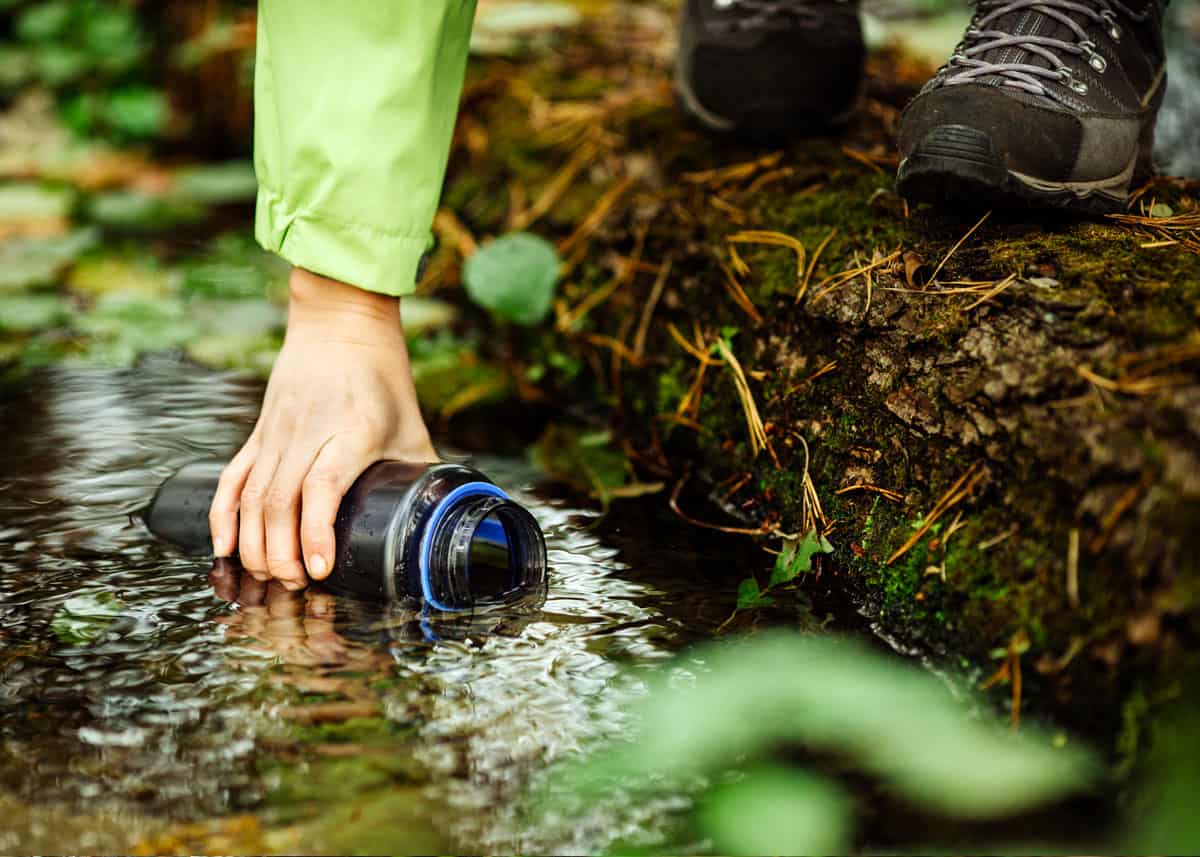
Here’s how to purify river water for drinking.
Gear for Drinking Water
Probably the most common question asked by people new to hiking is: “Do I need to buy a hydration pack or is a water bottle okay?”
Both are great and all it depends on is how long your hike will be and how hard the terrain is. If it’s a hard slog, you’ll want plenty of water. On the other hand, if it’s easy and relatively short then a water bottle should be plenty.
For hiking you want something that is made of sturdier stuff so if it happens to drop it won’t break and lose all of your water. A stainless steel or durable plastic bottle is best.
CamelBak Chute Mag
This 1.5l (50oz) water bottle is the perfect hiking bottle.
It has a wide mouth. This makes it easy to clean, add ice, and purify with a Steripen. The spout is angled, and has a carry handle, internal cap threads and a magnetic handle to keep the cap out of the way while drinking. Check current price on Amazon
Of course, this is also BPA, BPS, and BPF-free – ensuring that you’ll taste your drink and not the bottle. And all parts are top-rack dishwasher safe.
HydroFlask: Stainless, Insulated Hiking Bottle
Hydro Flask has a great range of durable, stainless steel insulated, leakproof water bottles that are easy to carry, stow in a side pocket or attaches to your pack.
Available in a range of colors, their wide mouth makes drinking on the trail easy and comfortable. From the smallest (just over 500ml) to the largest (nearly 2L) they are great for hiking. Check current price on Amazon
As an alternative, you might consider a hydration pack. They have room to store a few essentials and they keep your hands free. The 2-liter Miracol Hydration Backpack is a popular choice.
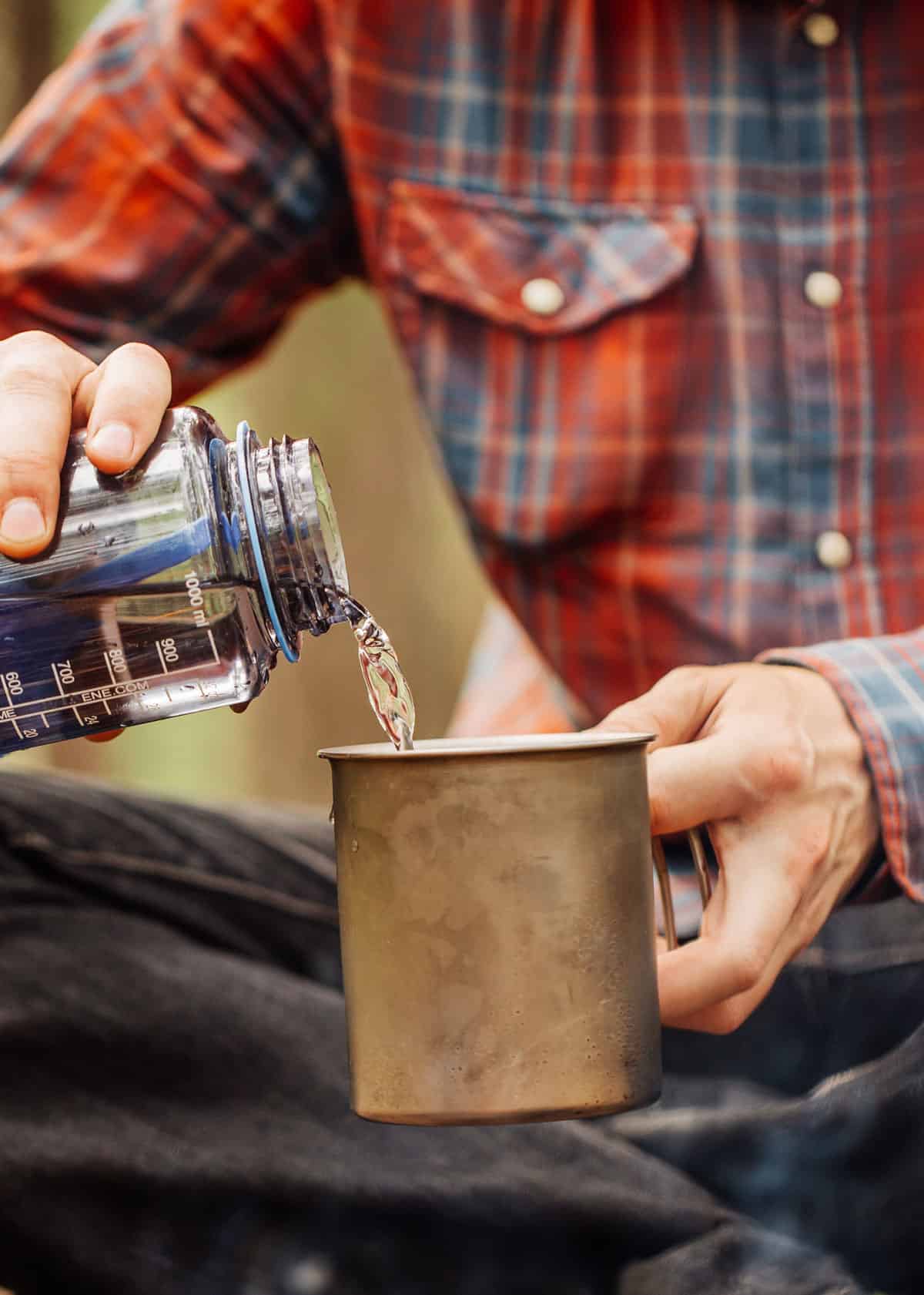
Camper Guide to Safe Water: How Long to Boil Drinking Water
5 Alternatives to Carrying Water
If you are hiking for days, camping, and completing a long trail then you won’t be able to take adequate water with you because it’s just too heavy and you couldn’t possibly carry it.
Alternatives worthy of looking at are purification tablets, small pump purifiers, or sterilization straws and pens. We’ve included examples of each so you can get an idea of which one appeals to you and would suit the terrain you will be hiking through.
1. Steripen UV Water Purifier
This is my favorite way to purify water. Simply collect the water, insert the UV light, and wait. Treatment takes just 48 seconds (500ml) or 90 seconds (1 liter).
According to Steripen, each treatment “destroys over 99.9% of bacteria, viruses, and protozoa”. A few years ago, I ran a lab test to see how well it works – here are the results.
Treat up to 50 liters of water per charge – and charge up to 300 times. Each Steripen treats up to 15,000 liters. This unit charges via USB – from your laptop, wall charger, solar panel, or power bank.
2. LifeStraw
Personal hydration straws that filter water from rivers, lakes, streams and other water sources making safe drinking water are a great option. They are lightweight, sturdy, safe and ensure you will never get dehydrated. Check current price on Amazon
Lifestraw has a microfiltration membrane that provides clean, safe drinking water from any source. Removing 99.999% of waterborne bacteria and parasites means you could even drink from a puddle if you wanted to.
3. Boil Water
If you’re on a hike, you can just make a fire, boil some water and enjoy.
According to the US Center for Disease Control, bringing water to a rolling boil for 1 minute will kill all pathogens. But it isn’t always that simple. Here’s more about purifying water by boiling.
You can also use water treatment tablets or a mini water filtration system.
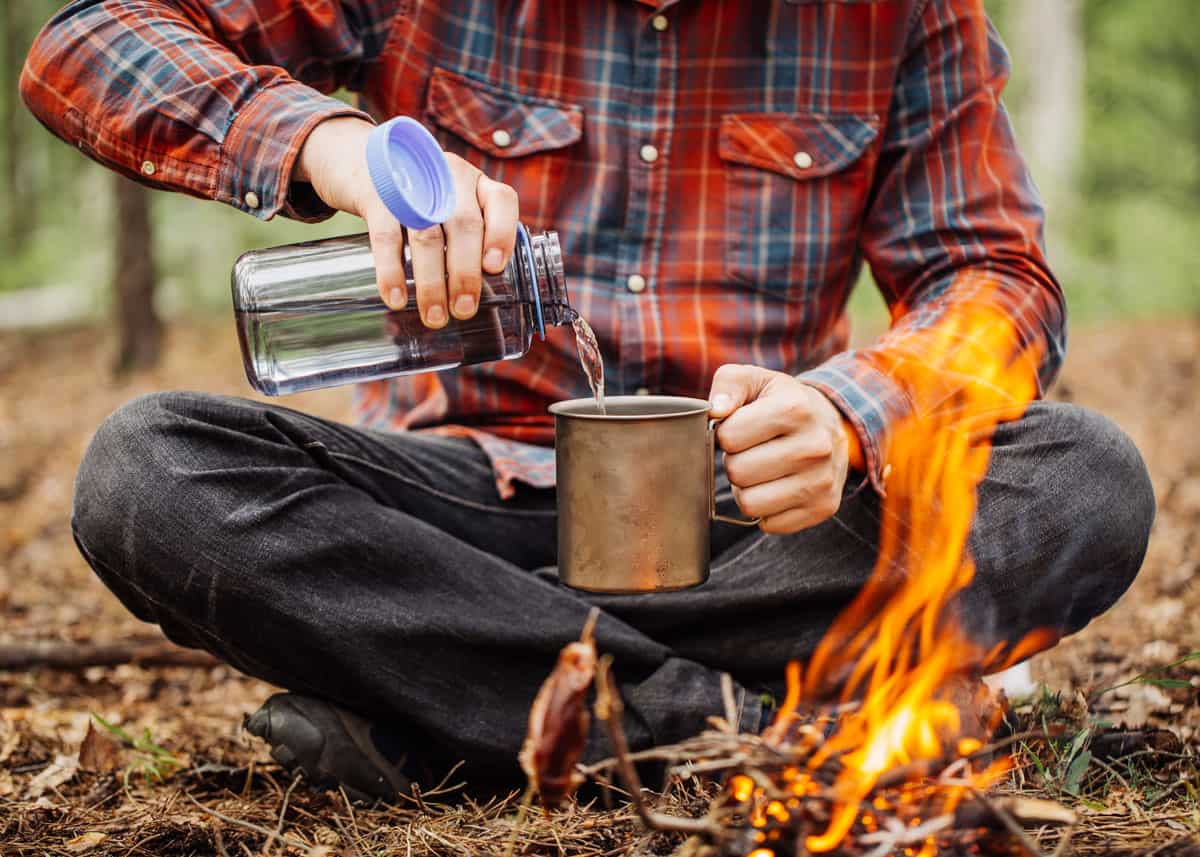
Here are the best travel water filters – they are portable, effective, and great for travel and outdoor adventures.
6 Hydration Tips for Healthy Hiking
- Drink light and often: It’s best to drink a small amount, more frequently. Before you even get thirsty get in the habit of taking a sip of water often to ensure your body stays hydrated.
- Take a break: Experts and experienced hikers will all say the same thing. Take a small 5-10 minute break every hour or so. Not only does this help keep you hydrated as we always seem to automatically drink water when we stop, but it also helps move along the metabolic waste that builds up in your legs reducing your soreness the next day.
- Walk at your pace: If you find yourself huffing and puffing, it can have a negative impact on your body. Hiking should be fun and if you are puffing it means that you are not getting the amount of oxygen your body needs to function properly.
- On hot days: Soak a sock (preferably clean) and put your water bottle in it. When you hang it on the outside of your pack it prevents it from getting too hot.
- Hydration salts: Keep a sachet of hydration salts or other electrolyte drinking powder to add to your water when going on an extended hike. Not only do they taste yummy but your body will thank you for it when you aren’t as sore the next day having stayed better hydrated and replacing some of those precious liquids we lose through sweat.
- Drink even in cold weather: People often don’t feel thirsty during cool weather or at higher elevations so it is a good idea to frequently take a sip to replenish what your body is losing even though you may not feel like it.
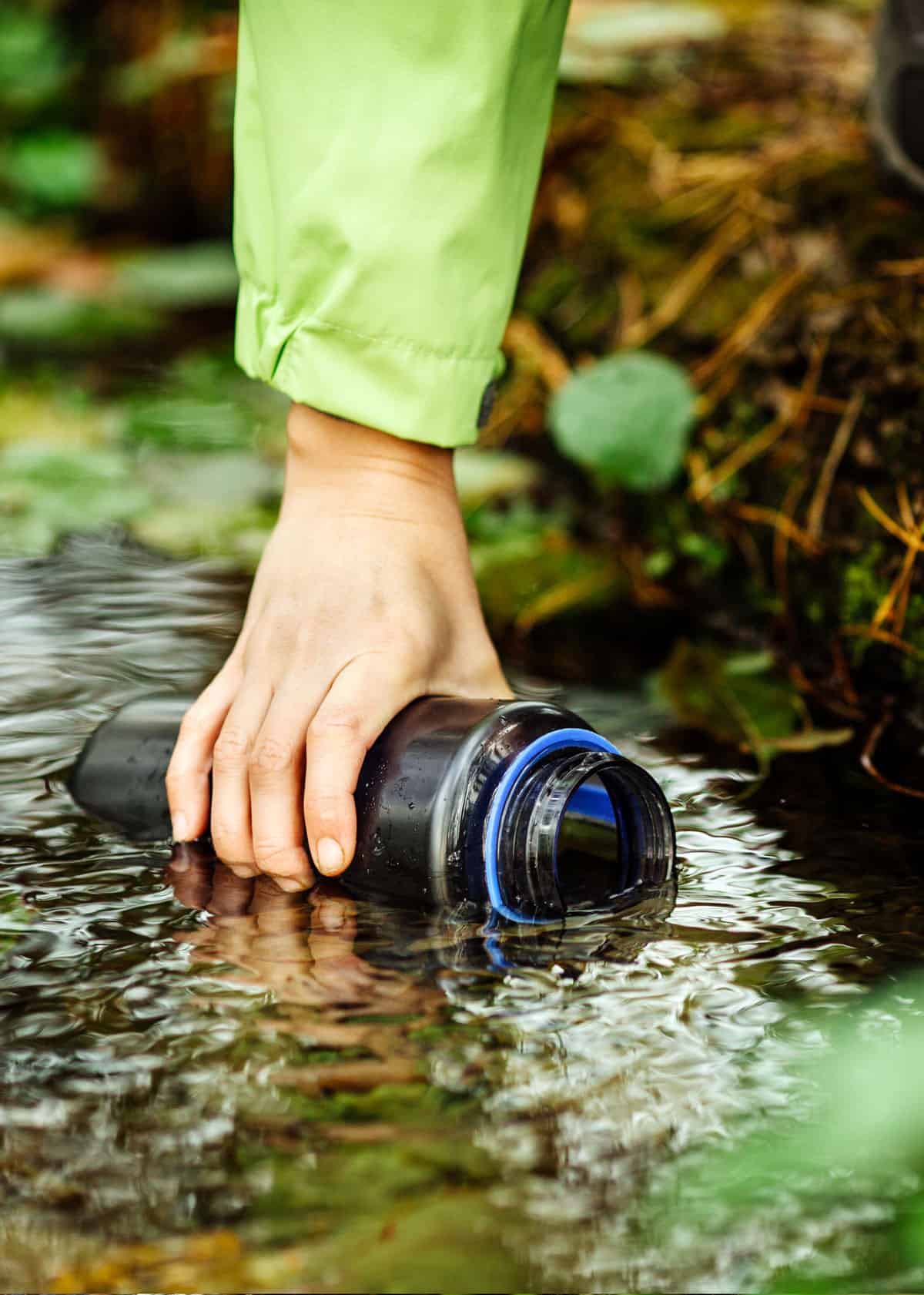
Learn more about bushcrafting and the skills to get started.
Your Turn
How do you plan to travel with enough water for your hike? Let me know below:
